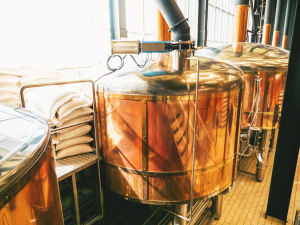For FMCG manufacturers looking at investing in automation, there's a new way to access packaging automation technology that avoids major up-front investment. Phillip Biggs of Foodmach discusses how Industry 4.0 technology is unlocking a new service model.
Conventional logic for FMCG manufacturing organisations when investing in new factory automation projects is to purchase the assets outright, with funding based on increased debt or the allocation of working capital. While this has been the accepted approach, it has potential drawbacks, specifically:
- the procurement process is typically transactional and ‘front-end’ heavy;
- machine life-cycle support costs and the total cost-of-ownership are difficult to determine, and so an accurate NPV comparison of investment alternatives is difficult to achieve;
- OEE measures of output, availability and quality are difficult to quantify in advance;
- the solution vendor may have little incentive for improving machine performance on a pro-active basis;
- uncertainty over who is responsible for the ongoing maintenance and machine reliability; and, importantly,
- available capital may be a constraint towards making the preferred, or any, factory automation improvement.
These conventional machinery supply arrangements force end-users to buy equipment, when what they really want is results. FMCG manufacturers may not necessarily want, for example, a case packer. What they really need is a packed case, a filled bottle, or a wrapped pallet.
We have all heard stories of machines or whole lines achieving SAT but failing to live up to expectations thereafter. It could be as simple as the cost of spare parts and service or access to those resources.
With the arrival of IoT technologies such as blockchain and cloud-based computing, a new model for deployment of automation improvements is now possible. It’s called Machinery-as-a-Service (MaaS).
With MaaS, a new machine is installed in the manufacturer's plant, and operated by their staff, however, the machine user pays for the machine outputs, not capital inputs. That is, they pay for the number of cases packed or bottles filled on a per unit basis. If a machine fails to operate, or operates below expectations, then reduced, or indeed no payments, may be due. If demand for their product decreases, so do the costs associated with machine output.
For the first time, advances in technology allow both OEM machine builders and end-user manufacturers to work together to optimise performance and financial outcomes for each party.
There are many benefits of a MaaS model for end-users, for example:
• capital expenditure is significantly reduced or entirely eliminated for the machine user;
• machine performance risk is avoided, as the end-user pays for outcomes, in the form of machine outputs;
• the OEM machine builder and the end-user have totally aligned interests – the OEM wins only when the manufacturer wins;
• maintenance cost management is simplified and virtually eliminated, as the OEM supplier provides all major support and maintenance services entirely within the MaaS agreement, free-of-charge – if the machine stops, so does the money flow, and so rapid and reliable support is assured;
• inherent in this support arrangement is that all machine warranty support costs, for the duration of the MaaS agreement, are carried by the OEM supplier; and
• performance optimisation occurs as the machine builder is motivated to identify methods to improve machine availability and output of in-spec quality products.
Underpinning this innovative model are a range of new engagement methods and technologies. Both parties agree contractual performance targets and terms, which are then stored as software decision logic in a cloud based and secure environment. Machine performance data (OEE based) is collected by the machine control system and delivered to the cloud via a secure block-chain based reporting system. The cloud platform calculates the financial results based on contract terms and OEE performance data and provides an auditable and immutable trail.
Ultimately, a machinery-as-a-service model allows FMCG manufacturers to buy what they want in the first place, which is output of in-spec products.
It’s important to recognise that this model is much more than just an equipment financing deal. The end-user is entering into a manufacturing service agreement, with both parties aligned in the sole objective of maximising machine reliability and product output.
In the US, we’re seeing steady uptake of this model in the packaging sector. In Australia, Foodmach initially launched the model with its face-mask (PPE) machines, and is now launching it across much of its product range, including case packers, liquid fillers, palletisers, stretch wrappers and AGV/AMRs.
ABOUT THE AUTHOR:
Phillip Biggs is a director at Packaging Partners, a small private equity firm with a focus on Australian-based packaging technology organisations, including Foodmach. You can find out more about Foodmach's MaaS service here.






